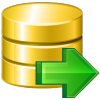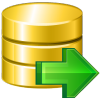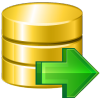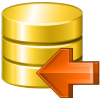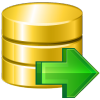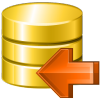Online Documentation for SQL Manager for DB2
Tables
Relational databases store all their data in Tables. A table is a data structure consisting of an unordered set of horizontal rows, each containing the same number of vertical columns. The intersection of an individual row and column is a field that contains a specific piece of information. Much of the power of relational databases comes from defining the relations among the tables.
To create a new table:
- select the Database | New Object... main menu item;
- select Table in the Create New Object dialog;
- define table properties and fields using the appropriate tabs of Table Editor.
Hint: To create a new table, you can also right-click the Tables node or any object within this node in the DB Explorer tree and select the New Table... item from the context menu.
To create a new table with the same properties as one of existing tables has:
- select the Database | Duplicate Object... main menu item;
- follow the instructions of Duplicate Object Wizard.
Alternatively, you can right-click a table in the DB Explorer tree and select the Duplicate Table <table_name>... context menu item.
Duplicate Object Wizard allows you to select the database to create a new table in, and to edit the result SQL statement for creating the table.
To edit an existing table (manage its fields, indexes, data, etc.):
- select the table for editing in the DB Explorer tree (type the first letters of the table name for quick search);
- right-click the object and select the Edit Table <table_name>... context menu item, or simply double-click the table;
- edit table subobjects and data using the appropriate tabs of Table Editor.
To change the name of a table:
- select the table to rename in the DB Explorer tree;
- right-click the table alias and select the Rename Table <table_name>... item from the context menu;
- edit the table name using the Rename Object... dialog.
To drop a table:
- select the table to drop in the DB Explorer tree;
- right-click the object and select the Drop Table <table_name>... context menu item;
- confirm dropping in the dialog window.
Note: If more convenient, you can also use the following shortcuts:
Ctrl+N to create a new table;
Ctrl+O to edit the selected table;
Ctrl+R to rename the table;
Shift+Del to drop the object from the database.










